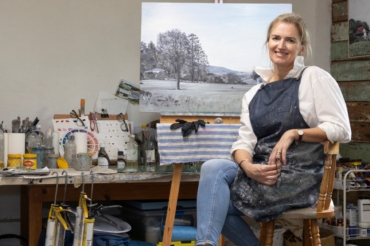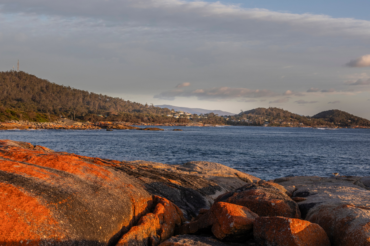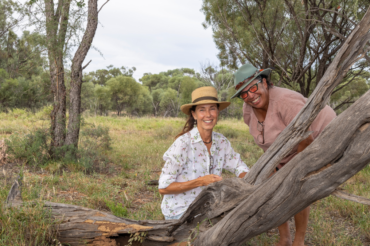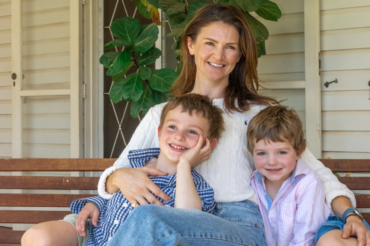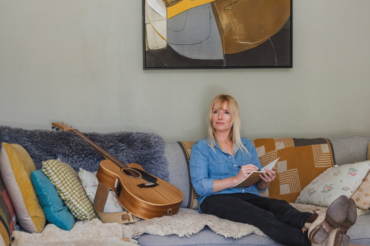
Ray and Rhonda Stamp have created a stunning garden in a busy service town of 20,000-odd residents, the location and the oasis they’ve created make it feel far removed.

There are no rules in Ray and Rhonda Stamp’s family garden beyond ‘don’t block the view of the paddock’. The Stamps have lived on the outskirts of Wangaratta in Victoria’s north-east since they bought a seven-acre (three-hectare) block almost 30 years ago. They farm Angus cattle on a property that’s been in Ray’s family for generations and is within sight of their backyard. Rhonda also grew up on the land, though in her case it was on the other side of the King River. Her mother was the farmer and her father was a sawmiller.

The Stamps subdivided their land for houses and built their first home next door to their current residence, which they completed in 2009. It’s on a sprawling block running down to a river-gum lined billabong that provides water for the expansive garden. “We saved the best for last,” Rhonda says. “When we built our original house, we made sure there was road access for the final block. When our four sons were grown and were living and working overseas, we decided to build a bigger house so there would be room for them all to come and stay when they visited.” Ironically, they’ve all returned to live in Wangaratta and now have homes of their own in town.
Rhonda, who recently retired from a career in nursing, comes from a family of passionate gardeners. Both her grandmothers were green thumbs and her mother encouraged her four daughters to embrace the rewards of getting their hands dirty. They’ve all turned into avid plantspeople and include Elizabeth Mason, who lives close by on a farm near Beechworth and whose story starts on page 14 of this issue. Two of Ray and Rhonda’s sons have also inherited the gardening gene, and never miss the chance to souvenir a cutting or two when they drop by.

Although the Stamps say the family garden has “just evolved”, its early autumn display contradicts the claim. The last of the cannas, dahlias and roses are still blooming and numerous deciduous trees — silver poplars, oaks, Chinese elms — screening the boundary are on the turn. A massive red river gum provides a focal point at the bottom of the garden, which ends on the banks of the billabong. “Being in the timber industry, Dad knows his trees,” Rhonda says. “He reckons that gum must be at least 300 years old.”
“We’re located on river flats, so the soil is good,” Ray adds. “We have good drainage and plenty of water so there’s no excuse not to have a garden.”


The Stamps are aided by a pump from the billabong that provides water to spray irrigate the garden, which these days covers almost two acres (0.8 hectares). The watering system is operated by a timer in the living room, a much-appreciated convenience. However, Rhonda admits she still spends quite a bit of time “running around with a hose for the pots”. She says she’s constantly adjusting the layout, to make it easier to maintain. “There’s no part I can’t get to on the ride-on mower,” she says. “I can now get around the entire garden in 40 minutes.”
Nonetheless, Rhonda estimates she spends two to three full days every week in the garden, maintaining, striking and adding new plants and tweaking according to whim. Ray is her willing ally, bringing in the farm bob cat to cart stone for the rock wall that marked the 2020 lockdown and the fish pond they added during the 2021 enforced stay-at-home time.

A pergola beside the house provides year-round interest. “I intended it to be covered by an ornamental grape vine,” Rhonda explains. “When that took a long time to establish, I planted a wisteria as well. So now we have the best of all seasons with coverage in summer, cascades of purple in spring, red leaves in autumn and bare branches letting the sun through in winter. It does mean there are a lot of leaves to sweep up, but it’s worth it.”
For Ray — “farmers never retire, they just work at a different pace” — the garden is a great vantage for keeping a weather eye on what’s going on in the paddocks on the horizon. “If something gets in the way of the view, there’s nothing a chainsaw can’t fix,” he says. “We’ve done a lot of travelling, both around Australia and overseas. But nothing beats the joy of coming home. It’s a real haven and it feels light years away from traffic and bustle.”

Rhonda agrees and adds that while they may live on the periphery of a busy service town of 20,000-odd residents, the location and the oasis they’ve created make it feel far removed. “But the best part after a long day in the garden is that we’re still close enough to town to order home delivery,” she says.
Photography Ken Brass

